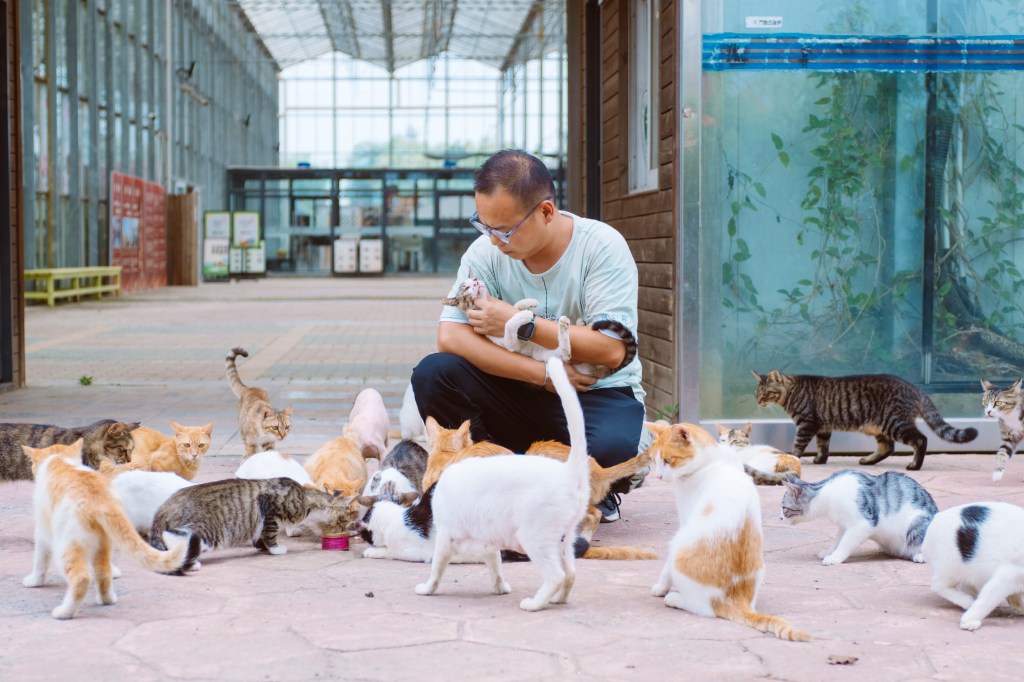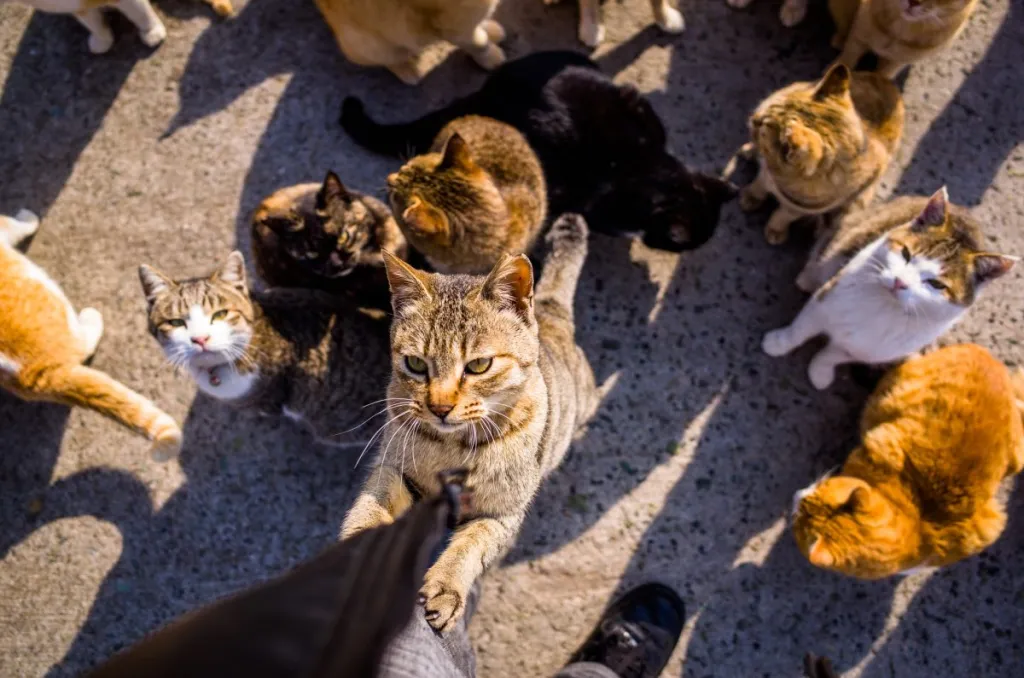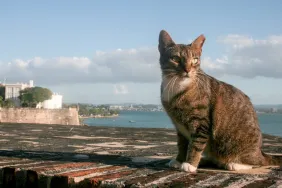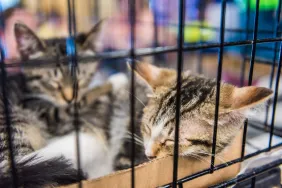In the bustling metropolis of Shanghai, China, not far from the whirlwind of fun that is Shanghai Disneyland, lies an unexpected haven — a sanctuary where the serenity is broken only by the gentle purrs and soft footsteps of its inhabitants. Welcome to Cat Island, a place that could easily be dubbed the feline equivalent of Disneyland. Here, over 400 cats find refuge in a meticulously crafted paradise tailored to their whims and well-being. Unlike their human counterparts, reveling in the thrills of nearby theme park rides, these felines bask in the tranquility of their secluded oasis, complete with grass-covered play tunnels and serene pagodas.
Combatting the feral cat crisis with the trap-neuter-return program
With an estimated stray cat population in Shanghai numbering between 400,000 and 1.5 million, the issue of controlling this growing population has become paramount. One of the most effective strategies embraced by the city is the trap-neuter-return (TNR) program. This humane approach focuses on trapping feral cats, neutering them, and then returning them to their original habitat or, when that’s not feasible, relocating them to sanctuaries like Cat Island. By neutering these cats, the TNR program aims to prevent further increases in the stray population, offering a long-term solution to what could otherwise become an unmanageable situation.
This initiative mirrors a broader trend in the city, where cat cafés serve as both sanctuaries for cats and social spaces for humans, facilitating adoptions. “A cat cafe is not only a place for cats and humans to play together, but also provides an opportunity for prospective adopters to fully contact with cats and help them understand whether they really want to choose a companion animal to join their family,” explains Erica Guo, owner of the all-rescue cat café More Meow Garden. In lieu of a centralized animal welfare organization like the American Society for the Prevention of Cruelty to Animals (ASPCA), grassroots movements and cat cafés are stepping up to fill the gap.
The aftermath of the COVID-19 pandemic and renewed focus on animal welfare in China
The onset of the COVID-19 pandemic and the ensuing lockdowns across China brought to light the plight of pets — and especially cats — in urban settings, particularly in Shanghai. Stringent restrictions forced authorities to take pet owners to quarantine centers, resulting in the abandonment or tragic culling of many animals. This crisis underscored the fragility of urban animal populations during emergencies and galvanized support for more sustainable solutions.
In response to this critical situation, a government-affiliated nonprofit foundation inaugurated the Shanghai Pet Base facility at the end of 2022, which encompasses Cat Island. Central to the foundation’s mission is the implementation of the TNR program. This approach, coupled with adoption efforts for cats who cannot be returned, marks a critical step towards resolving the complex issue of stray animals in urban environments.
Challenges and triumphs in cat adoption

Despite the idyllic setup and the well-intentioned efforts, Cat Island faces its own set of challenges, particularly in finding homes for its many feline residents. Prospective adopters must navigate a series of hurdles. They must engage in a comprehensive process that includes educational courses and home suitability inspections, a testament to their dedication towards responsible pet ownership. Consequently, the rate of adoption is less than hoped for, with only 130 cats finding new homes over 18 months — according to the Washington Post.
Yet, hope persists in places like More Meow Garden, where about one cat is adopted monthly. The phenomenon reflects a changing societal attitude towards pets in China, with an increasing number of people opting for furry companions over traditional familial setups.
“Cat adoption has become quite popular in recent years, especially among the younger generation,” says Guo. Nonetheless, the concept of pet ownership as a symbol of social status presents challenges, particularly for the adoption of non-purebred cats.
The urgent need for legislation and education on animal protection in China
Shanghai’s Cat Island is emblematic of a transformative shift in China’s approach to animal welfare, bridging the gap between community engagement and government intervention. However, the road to reform is fraught with obstacles, from societal attitudes to the absence of legal protections for animals. The tragic demise of Zorro, a beloved black-and-white “cow” cat in Jing’an Sculpture Park, and the subsequent public outcry underscored the dire need for comprehensive animal protection laws in China.
In a country with no laws against animal cruelty or abandonment, advocates for animal rights are calling for legislative changes to protect companion animals. “Without a protection law, we must establish a social standard that isolates and blacklists animal abusers,” stated Zha Zhenliang, the foundation official overseeing Cat Island and the Pet Base.
Beyond legal reforms, there’s a consensus among advocates about the necessity of educating the public on responsible pet ownership and tackling the root causes of the stray animal crisis, such as over-breeding. Along with proactive strategies — such as TNR initiatives — these approaches aim to manage and ultimately decrease the number of strays.
Shanghai’s Cat Island: A purr-fect sanctuary amidst urban chaos
As Shanghai continues to grapple with its stray cat population, Cat Island stands as a testament to the power of compassion and the potential for change. It challenges residents and visitors alike to rethink their relationship with the animal kingdom, encouraging a shift towards a more inclusive, empathetic society. Through continued efforts in education, adoption, and neutering, the dream of a happier, safer world for these feline residents is slowly but surely becoming a reality. Cat Island may not boast the grandeur of Disneyland, but for its furry inhabitants, it’s nothing short of magical — a true feline paradise.









